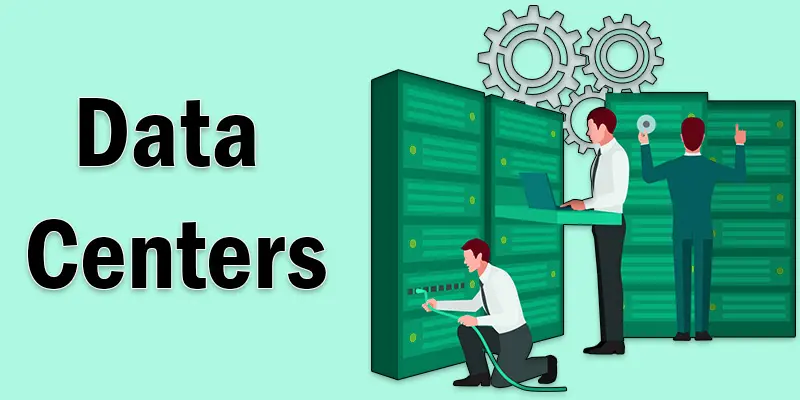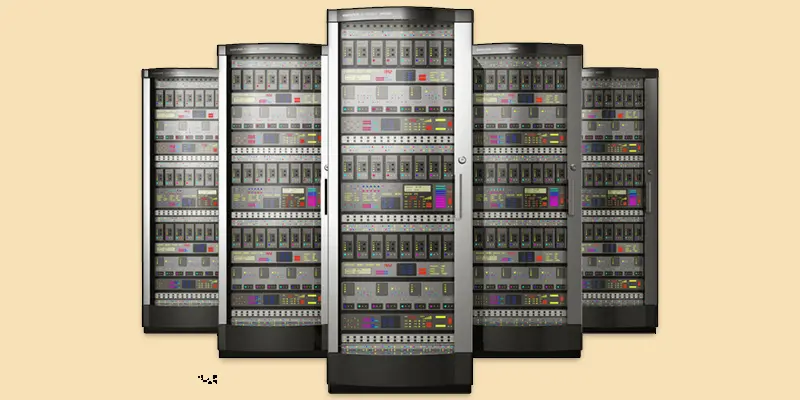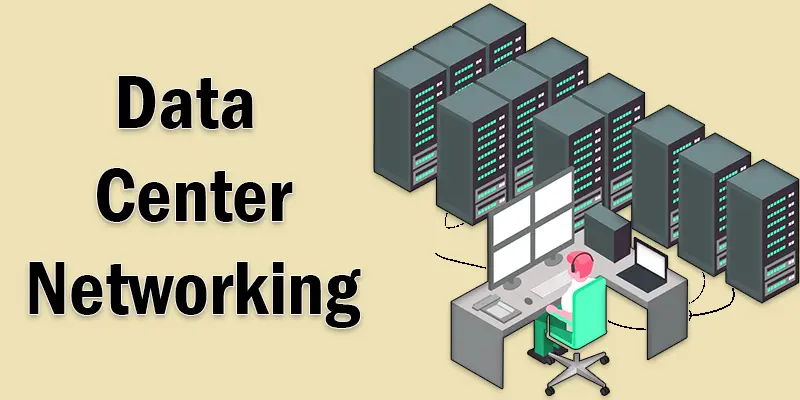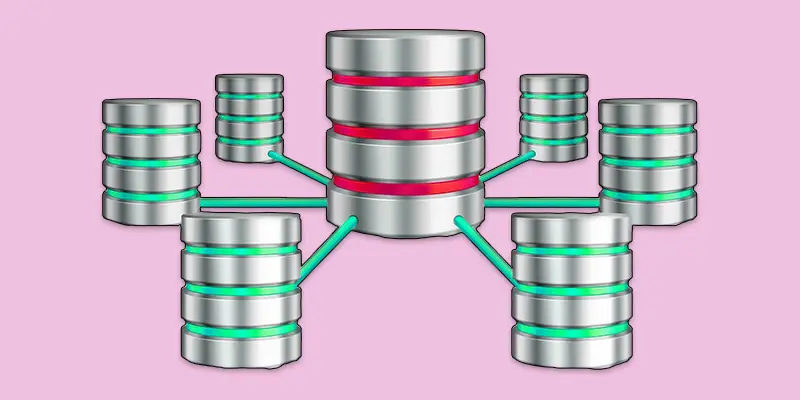What is a Data Center Works, Components, Types, Importance, and Evolution of Data Centers
Published: 20 May 2025
Distributed Data Centers
Distributed data centers power the modern internet, ensuring seamless access to data across the globe. But have you ever wondered how websites stay fast and reliable, even during high traffic? Traditional data centers often struggle with downtime, slow speeds, and security risks, frustrating businesses and users alike. Imagine a world where websites never crash, videos never buffer, and data is always available—that’s the power of distributed data centers. By spreading data across multiple locations, they improve speed, reliability, and security, making them essential for businesses today.
What is a Data Center
Distributed data centers are networks of interconnected facilities that store and manage data across multiple locations, enhancing speed, security, and reliability. In technology, they power cloud computing and global applications; in healthcare, they ensure secure patient data access across hospitals; and in education, they support online learning platforms with seamless data availability.

Core Components of Data Centers
- Servers: The backbone of the data center, these machines process and store data, hosting applications, websites, and services.
- Storage Systems: These systems manage the large amounts of data stored in a data center, often using hard drives or solid-state drives (SSDs) to ensure quick access and high capacity.
- Networking Equipment: Includes routers, switches, and cables that facilitate communication between servers, users, and other data centers.
- Power Supply: Data centers employ backup power systems like generators and UPSs (Uninterruptible Power Supplies) to prevent outages since reliable and continuous power is essential.
- Cooling Systems: Since servers generate heat, cooling units like air conditioning or liquid cooling systems are used to maintain an optimal temperature.
- Security Systems: Physical and cybersecurity measures (e.g., firewalls, access controls, surveillance) protect data and equipment from unauthorized access and threats.
- Racks and Enclosures: These are used to house servers and other equipment, organizing and optimizing space within the data center.
- Management Software: These tools help monitor and control data center operations, from performance tracking to automated resource management.
Which distributed data center kinds exist?
Distributed data centers come in five main varieties, each with a unique architecture:
- Enterprise Data Center
- Colocation Data Center
- Cloud Data Center
- Edge Data Center
- Hyperscale Data Center
Enterprise Data Center
An enterprise data center is a location where a single business owns and runs its IT infrastructure and data storage. These data centers are tailored to the organization’s unique requirements in terms of security, software, and hardware. They provide complete control over data management and are usually built on-site or in nearby locations for easy access. Example: A large retail company may have its own enterprise data center to manage customer transactions, inventory data, and employee information securely.
Colocation Data Center
Businesses can rent space in a colocation data center to store and manage their servers and other hardware. Instead of building their own data center, companies share the space with others, saving costs while having access to secure and reliable infrastructure. Example: A small e-commerce company might rent space in a colocation data center to house its servers, so it doesn’t need to invest in expensive facilities or worry about power and security.

Cloud Data Center
Cloud data centers, which are dispersed data centers managed by cloud service providers, store and make available data and applications online. These data centers provide scalable resources, meaning businesses or individuals can increase or decrease their usage as needed without owning the physical hardware. This flexibility allows companies to pay only for what they use. Example: Amazon Web Services (AWS) is a popular cloud data center provider, offering businesses the ability to store and manage their data online without needing their own physical servers.
Edge Data Center
A tiny facility situated near consumers or devices, an edge data center is made to process data faster by cutting down on the distance it must travel. This helps in minimizing delays (or latency) and improving the speed of services like online gaming, video streaming, or IoT applications. Example: A company providing real-time video streaming might use an edge data center in different cities to ensure smooth playback with minimal buffering for viewers in those areas.
Hyperscale Data Center
Large facilities built to manage enormous volumes of data and support the infrastructure of major IT firms, such cloud service providers, are known as hyperscale data centers. These data centers are built to scale easily, meaning they can quickly expand to meet growing demands for computing power and storage. Example: Amazon Web Services (AWS) operates hyperscale data centers to support its cloud services, offering millions of users fast and reliable access to data and applications.
Importance of Data Center Architecture in Distributed Systems
- Scalability: A robust architecture allows for easy expansion of resources as demand increases.
- Reliability: Ensures continuous service by distributing data and operations across multiple locations to avoid single points of failure.
- Efficiency: Optimizes data processing and resource allocation, reducing latency and improving performance.
- Load Balancing: Distributes traffic evenly across servers, preventing overload and ensuring fast access.
- Fault Tolerance: Keeps the system operational even in the event of hardware failure or other issues.
How do data centers work
Numerous servers and other necessary hardware for storing, managing, and processing data are housed in specialized facilities called data centers.They are designed to keep digital services running smoothly by providing the infrastructure needed for everything from web hosting to cloud computing. Here’s how they work
- Data Storage and Processing
- Redundancy and Reliability
- Cooling Systems
- Security and Monitoring
Data Storage and Processing
Data Storage and Processing Data centers store vast amounts of data on servers, and these servers process requests such as loading a website, accessing applications, or handling transactions. They are connected through high-speed networks to ensure that data moves quickly and efficiently.

Redundancy and Reliability
Redundancy and Reliability Data centers are built with redundancy to ensure that even if one component (e.g., server, network switch, power source) fails, others can take over. This ensures that services remain uninterrupted.
Cooling Systems
Cooling Systems Servers generate heat during operation, and data centers use specialized cooling systems (like air conditioning or liquid cooling) to maintain an optimal temperature, preventing overheating and ensuring efficiency.
Security and Monitoring
Protection and Surveillance Data centers employ sophisticated security measures, such as firewalls, access control systems, and surveillance cameras, to shield private information from online threats and illegal access. Monitoring software ensures that systems run smoothly and can alert administrators to potential issues.
Evolution of Data Centers
Data centers have evolved significantly over the years, from small server rooms to massive, highly efficient facilities. In the past, companies used on-site servers for data storage and processing, but as technology advanced, the rise of cloud computing led to more centralized, scalable solutions. Today, data centers are larger, faster, and more secure, supporting everything from online services to artificial intelligence, and are designed to meet the growing demands of modern businesses and users worldwide.

Conclusion – About Distributed Data System
As technology advances, distributed data centers will play an increasingly significant role in shaping the future of digital infrastructure. Embrace the potential they hold to create faster, more reliable, and scalable systems. The world of distributed data centers is full of exciting opportunities, and by diving deeper into this field, you can be part of the innovation that drives the next generation of technology. Keep exploring, and the possibilities are limitless!
FAQS Distributed Data
The amount of data a data center can hold depends on its size and the technology used. Larger data centers can hold petabytes (1 million gigabytes) or even exabytes of data. This allows them to support massive websites, applications, and services for businesses and individuals.
Data centers are managed by teams that monitor their performance, security, and hardware. They use specialized software for tasks like load balancing, backup, and system updates. The goal is to ensure the data center runs smoothly, securely, and without downtime.
A modern data center is designed to be more efficient, scalable, and secure. It uses advanced technology like virtualization, automation, and cloud computing to meet the growing demands of data processing and storage. These centers are also built with sustainability in mind, reducing energy consumption.
Data centers follow specific standards for reliability, security, and environmental factors. Common standards include Tier classifications (from 1 to 4) for uptime, and certifications like ISO/IEC 27001 for security and PCI DSS for payment data security. These standards help ensure data centers meet industry best practices.
The practice of merging several data centers into one or fewer locations is known as data center consolidation.This helps reduce costs, improve efficiency, and simplify management by using advanced technologies and virtualization to increase resource utilization.
SOC 2 for service businesses, GDPR for data privacy, and HIPAA for healthcare data are common compliance standards for data center security.These standards ensure that data centers handle data securely, protecting against unauthorized access, leaks, and breaches.
Data contracts, or service level agreements (SLAs), outline the responsibilities of both the data center provider and the customer. These agreements ensure that security measures, data privacy, and regulatory compliance are met. They also clarify how breaches or failures are handled, supporting compliance efforts.
Managing data consistency across several sites, reducing latency, and guaranteeing dependable connectivity are some of the difficulties associated with scaling a dispersed data center network.Expanding infrastructure can also be costly and complex, requiring careful planning to maintain performance. Additionally, security becomes more difficult to manage as the network grows.

- Be Respectful
- Stay Relevant
- Stay Positive
- True Feedback
- Encourage Discussion
- Avoid Spamming
- No Fake News
- Don't Copy-Paste
- No Personal Attacks

- Be Respectful
- Stay Relevant
- Stay Positive
- True Feedback
- Encourage Discussion
- Avoid Spamming
- No Fake News
- Don't Copy-Paste
- No Personal Attacks





